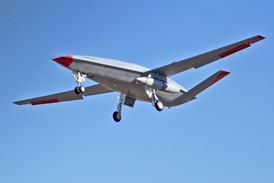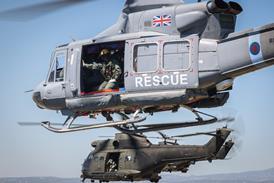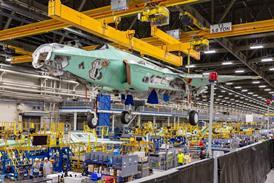Travellers are willing to pay less for in-flight Wi-Fi than in previous years, a new survey from Innovation Analysis Group (IAG) finds.
IAG has been surveying the in-flight connectivity market for three years. In 2006 the typical traveller who opted for a fixed annual payment was prepared to pay $200. But that average has dropped to $137, according to IAG.
"Clearly this decline puts pressure on the few providers in the market and certainly puts a question mark on the decision by one vendor to charge $49 per month, which translates into $600 per year," says IAG chief Addison Schonland.
He says that while respondents still like the idea of a flat fee, they are now "prepared to pay a lot less for the service than even three years ago".
IAG's survey was conducted online among travellers who frequent both Twitter and selected web sites that attract people who have an interest in in-flight connectivity, including Flightglobal's Runway Girl blog. The report is based on 185 responses.
The majority of respondents live in North America, where in-flight Wi-Fi is becoming more prevalent, and is considered to have the greatest potential in the near-term due to the quick expansion of Aircell's air-to-ground (ATG)-based Gogo broadband system.
Asked to comment on the results of the survey, Richard Owen, former executive director of the World Airline Entertainment Association (WAEA), said one reason why there has been a drop in what passengers say they are willing to pay for Internet access on airplanes is that there has been a drop in Wi-Fi access fees on the ground, such as at low-cost hotel chains and other areas of the hospitality industry.
"So that has become almost an expectation for a number of business travellers that they will be provided [Wi-Fi] at low or no cost, and that has translated I think to some degree into what passengers, particularly business passengers, may be expecting on commercial flights."
Owen, who now heads up IFE&C consultancy GlobalPoint Group, also points out that when IAG first conducted its survey three years ago, commercial Wi-Fi on US aircraft "was still seen as one of the holy grail things that was on the near horizon that wasn't quite happening".
However, now that the service has arrived - and is being offered on more and more US domestic flights, and passengers know it is possible, "they're starting to think much more about, 'what would I actually pay for this service if I had it on a plane'?"
Providing Wi-Fi to passengers is much more challenging than providing it to hotel occupants, however, as there are many more technical and certification hurdles that need to be overcome. "So while the consumer may have an expectation for very low prices, there is also going to be a learning curve for the passenger to understand that this is not as simple as putting in a wireless router and making it work on an airplane. There are technical as well as airworthiness protocols that need to occur for that to happen on a plane," says Owen.
Boeing played a pivotal role in bringing in-flight connectivity to passengers. Several international carriers, including Lufthansa, adopted the airframer's high-speed Connexion by Boeing service, which was supported by Ku-band satellite links. However, Connexion was ultimately a commercial failure, and ceased providing services to airlines at the end of 2006.
Owen says the proliferation of personal electronic devices among passengers has made the pricing equation for in-flight Wi-Fi different today than in the days of Connexion.
Aircell, which has become the dominant provider of in-flight Wi-Fi in the USA, offers a number of pricing options for Gogo usage, for example. Passengers with laptops are charged standard fees of $9.95 for using Gogo on flights of three hours or less, and $12.95 for flights of more than three hours. The company also allows users to access Gogo on their smartphone - on flights of any length - for $7.95 per trip.
"I think part of what we're seeing evolve is a pricing mechanism that charges based upon what people do on a plane," says Owen, noting that there are different bandwidth requirements for using full in-flight Internet versus simple text or Blackberry email back and forth.
IAG's survey also asked respondents to divulge the frequency of their in-flight Wi-Fi use if it was made available to them. A full 47% said they would use it on every flight, and another 48.6% said they would use it occasionally.
"Together the 'users' group accounts over 95% of respondents. We would suggest this demonstrates a rather steep demand curve," says Schonland. "While it could be argued the respondent base for this survey is predisposed to make use of the service since we sought out technology users and sought them in places where connectivity information is available. That said, the same argument can be made about people who are adamantly opposed to in-flight connectivity. Our research, we believe, clearly shows the market is going to show strong demand. Indeed, the anecdotal feedback from vendors is that service take up is higher than they projected. This result is consistent with our data."
Source: Air Transport Intelligence news
















